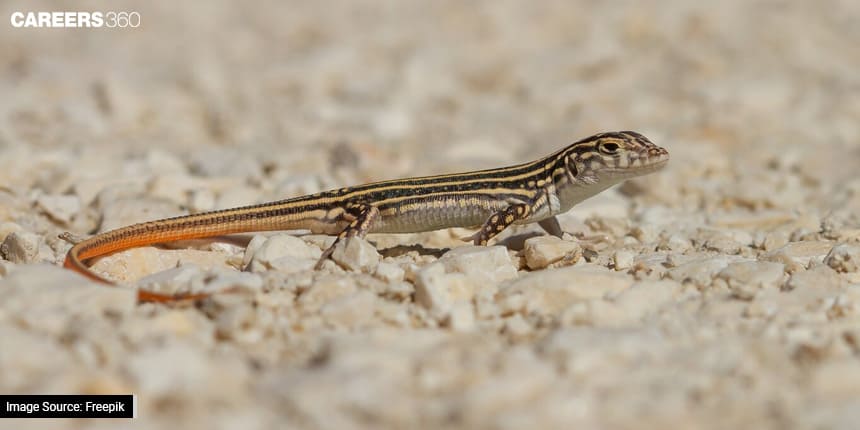Asexual Reproduction In Animals: Exploring Parthenogenesis And Budding
Reproduction is a fundamental aspect of life, ensuring the continuity of species. While sexual reproduction is the norm in the animal kingdom, asexual reproduction represents a unique strategy for certain organisms. Asexual reproduction involves the creation of offspring without the fusion of gametes, typically resulting in genetically identical progeny. Two remarkable forms of asexual reproduction found in animals are parthenogenesis and budding.
This Story also Contains
- Parthenogenesis: The Virgin Birth
- Budding: A Clone of Oneself
- Evolutionary Significance and Adaptations

Parthenogenesis: The Virgin Birth
Understanding Parthenogenesis
Parthenogenesis, derived from the Greek words "parthenos" (virgin) and "genesis" (origin), refers to the development of an embryo from an unfertilised egg. In essence, it's a form of virgin birth. This phenomenon is more common than one might think and is observed in various taxa, including insects, reptiles, and some fish. The absence of a male contribution doesn't hinder the formation of viable offspring.
Mechanisms of Parthenogenesis
The mechanisms underlying parthenogenesis vary among species. In some cases, an egg undergoes division without fertilisation, a process known as mitotic parthenogenesis. Alternatively, certain organisms might stimulate the egg to develop without fertilisation, a phenomenon called automictic parthenogenesis. The resulting offspring, while genetically identical to the mother, may display slight variations due to mutations or other genetic mechanisms.
Parthenogenesis often serves as a reproductive strategy in environments where finding a mate is challenging. It allows certain species to rapidly colonise new areas, ensuring survival in dynamic ecosystems. However, this reproductive strategy is not without its challenges, as the lack of genetic diversity can make populations more susceptible to diseases and environmental changes.
Also Read: Discover The Pattern Of Epigenetics: The Interaction Of Genes And Environment
Budding: A Clone of Oneself
Unveiling the Process of Budding
Budding is another intriguing form of asexual reproduction, characterised by the outgrowth of a new individual from the body of the parent organism. This process is common in various invertebrates, such as certain cnidarians (e.g., jellyfish and corals) and some simple multicellular organisms.
Types of Budding
There are several types of budding, each exhibiting unique characteristics. In external budding, a bud forms on the exterior of the parent organism and eventually detaches to become an independent individual. Internal budding, on the other hand, involves the formation of a bud inside the parent organism, which is later released as a separate entity.
Budding enables the rapid production of offspring, creating clones with identical genetic information. This can be advantageous in stable environments where the parent's genetic makeup is well-suited for survival. However, similar to parthenogenesis, budding has its drawbacks. The lack of genetic diversity can limit adaptability to changing conditions, making populations vulnerable to environmental fluctuations.
Evolutionary Significance and Adaptations
Both parthenogenesis and budding provide organisms with a means of reproduction that doesn't rely on the complexities of finding and mating with a partner. These asexual strategies have evolved in response to specific ecological challenges and opportunities.
In terms of evolution, asexual reproduction has both advantages and disadvantages. While it allows for rapid population growth and colonisation, the lack of genetic recombination may hinder the ability of a population to adapt to changing environments. In the long run, sexual reproduction, with its shuffling of genetic material, is often considered a more effective strategy for promoting genetic diversity and resilience.
Asexual reproduction, through mechanisms like parthenogenesis and budding, showcases the remarkable diversity of life on Earth. These processes highlight the adaptability of organisms to various ecological niches and provide insights into the complex interplay between reproductive strategies and environmental pressures. While asexual reproduction offers efficiency and rapid expansion, the trade-offs in terms of genetic diversity underscore the dynamic balance between stability and adaptability in the story of life.
Also Read: Understanding The Power Of Synthetic Biology For A Transformed Future
Applications for Admissions are open.
As per latest syllabus. Physics formulas, equations, & laws of class 11 & 12th chapters
JEE Main Important Chemistry formulas
Get nowAs per latest syllabus. Chemistry formulas, equations, & laws of class 11 & 12th chapters
JEE Main high scoring chapters and topics
Get nowAs per latest 2024 syllabus. Study 40% syllabus and score upto 100% marks in JEE
JEE Main Important Mathematics Formulas
Get nowAs per latest syllabus. Maths formulas, equations, & theorems of class 11 & 12th chapters
